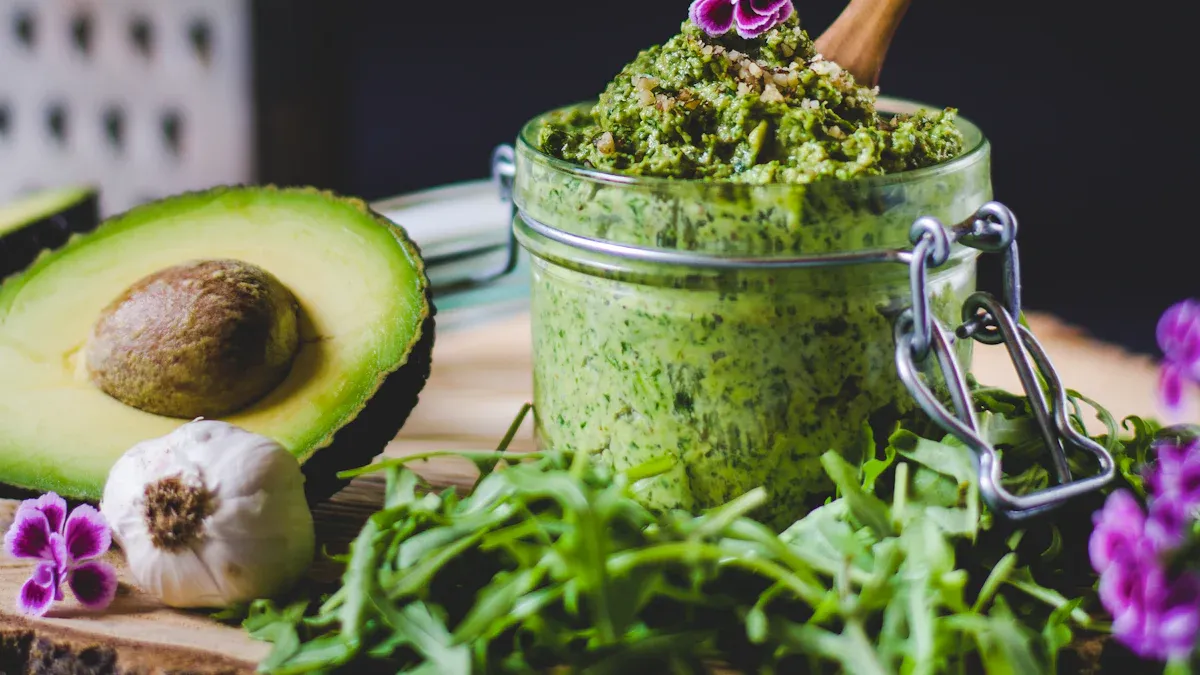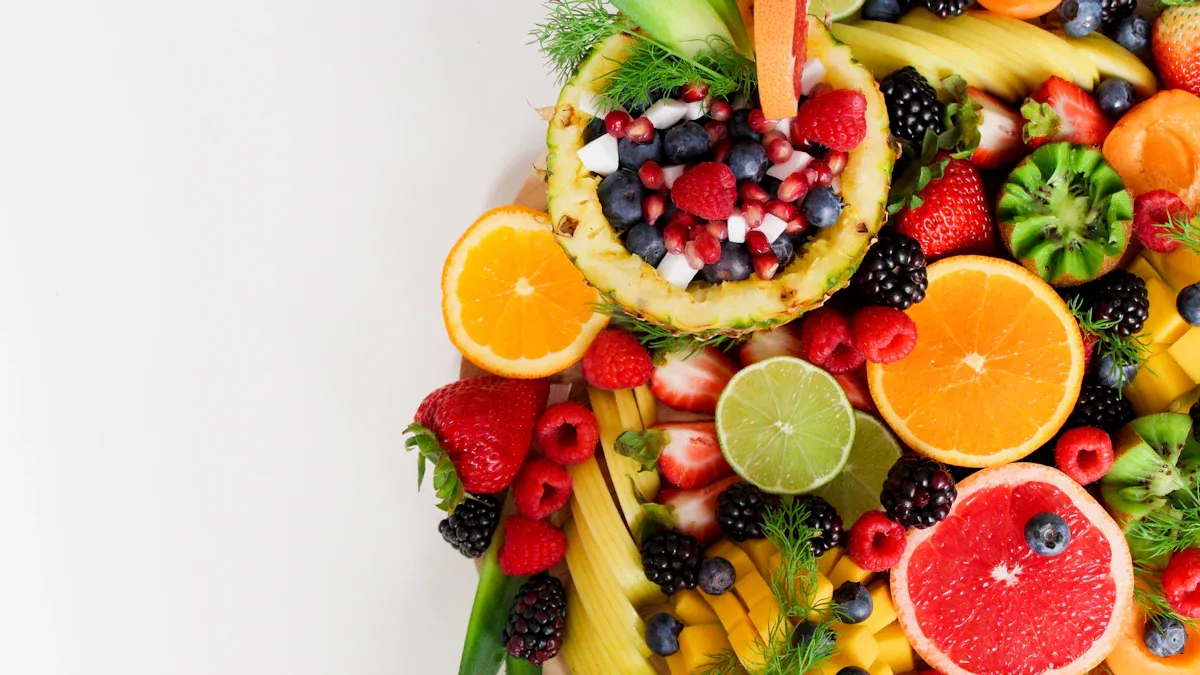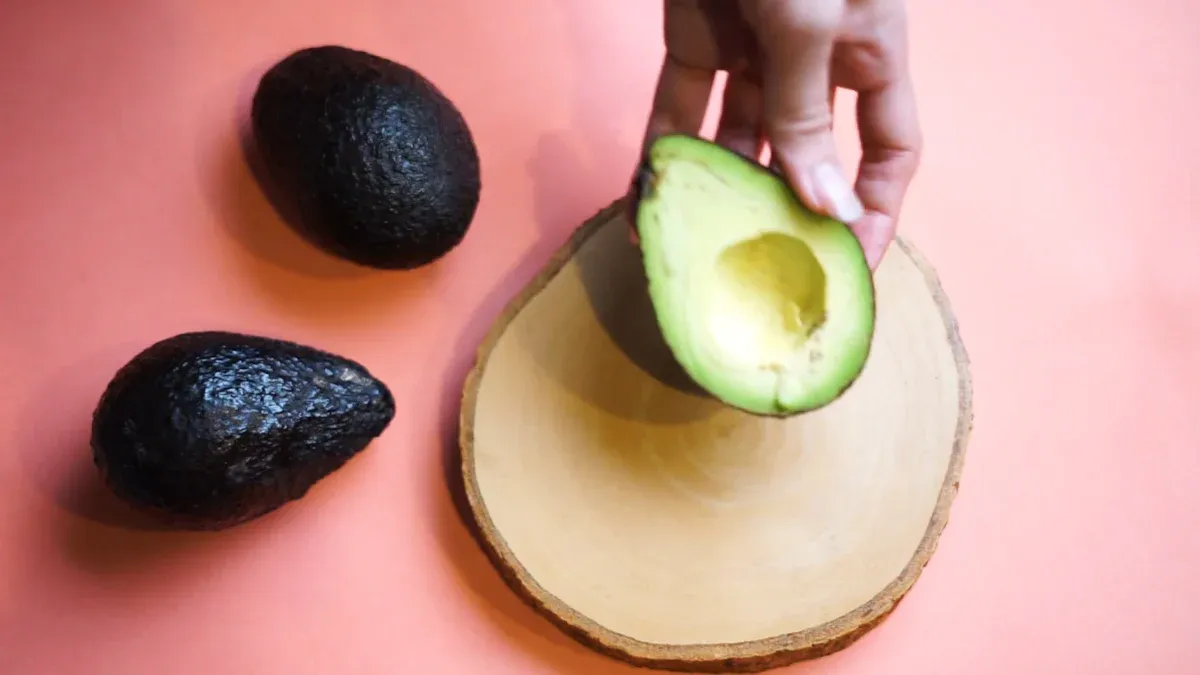
Many people believe you cannot enjoy fruit on a low carb diet. This is a common misunderstanding. You can actually include certain low carb fruits in your meal plan. You just need to choose them carefully. Understanding net carbs is very important for fruit selection. This helps you stay on track with your keto diet. This guide shows you the best keto-friendly options. It also lists their net carb counts.
Key Takeaways
You can eat some fruits on a low-carb diet. Choose fruits with fewer net carbs to stay healthy.
Net carbs are total carbs minus fiber and sugar alcohols. Fiber does not raise your blood sugar.
Berries like raspberries, blackberries, and strawberries are good choices. Avocados and watermelon also work well.
Always watch how much fruit you eat. Even low-carb fruits have some carbs.
Avoid fruits like bananas, grapes, and mangoes. They have too much sugar for a keto diet.
Net Carbs for Keto Diet
What Are Net Carbs
You need to understand net carbs for a low-carb or ketogenic diet. These are the carbohydrates your body actually digests and uses for energy. They are the ones that affect your blood sugar levels. In nutritional science, net carbohydrates are calculated by subtracting the grams of fiber and sugar alcohols from the total carbohydrates of a food or beverage. This approach shows that not all carbohydrates are absorbed by your body. They do not all produce a glycemic response. This value is defined as the total carbohydrates in a food portion minus the grams of fiber. This calculation is important. Fiber does not affect blood sugar or insulin response. Focusing on this value helps you identify the carbohydrates that do influence these responses. Net carbs refer to the total amount of carbohydrates in a food. You subtract both fiber content and sugar alcohols. Neither fiber nor sugar alcohols significantly impact blood sugar levels. For example, an apple with 25 grams of carbs and 4.5 grams of fiber has 21.5 net carbs. Sugar alcohols do not significantly affect blood sugar. You deduct them from total carbs.
Calculating Net Carbs
Calculating net carbs is straightforward. You can easily do this for any food, including fruit. Follow these steps:
Identify Total Carbohydrates: Look at the nutrition label. Find the total carbohydrate amount per serving.
Subtract Fiber: Take away the amount of fiber per serving from the total carbohydrates.
Subtract Sugar Alcohols (if applicable): Some products have sugar alcohols. If they do, subtract them from the remaining carbohydrate count. You only need this step if sugar alcohols are present. Labels often list them if they make claims about sugar content, like “sugar-free.”
The formula is simple: Net carbs (g) = total carbs – fiber – sugar alcohols. These carbohydrates are generally the ones your body can absorb. They are the ones that impact your blood sugar levels. There is no formal definition from regulatory bodies. However, this calculation method is widely accepted. It shows the carbohydrates that will increase your blood glucose.
Fiber’s Role in Fruit Carbs
Fiber plays a crucial role in your low-carb diet. It greatly impacts your net carb calculations. Dietary fiber is generally subtracted from total carbohydrates when you calculate this value. This is because your small intestine does not absorb it. It has minimal impact on your blood sugar levels. This rule applies to whole foods like fruit. For example, you calculate net carbs for an avocado. You subtract its fiber content from its total carbohydrates. A medium avocado has 17.1 grams of total carbs and 13.5 grams of fiber. This gives you 3.6 grams of net carbs (17.1 – 13.5 = 3.6).
Fiber comes in two types: insoluble and soluble. Insoluble fiber passes through your colon unchanged. It provides no calories. It does not affect insulin or blood sugar. Soluble fiber dissolves in water. Colon bacteria ferment it into short-chain fatty acids. This provides about 1-2 calories per gram. It generally does not spike your blood glucose. It may even help reduce blood sugar levels. Fiber, found in fruit, moves slowly through your digestive system. Much of it, especially insoluble fiber, is not digested at all. Manufacturers typically subtract fiber when calculating the net value. They believe it has a minimal impact on blood sugar levels.
Dietary fiber is also very important for your gut health. It increases beneficial bacteria in your colon. This is true for sources like inulin and oligosaccharides. A keto diet needs fiber-rich, low-carbohydrate foods. These include leafy greens, nuts, berries, and resistant starchy vegetables. You need them to maintain a healthy gut microbiome. Low-carb diets can sometimes lack enough fiber.
Top Keto-Friendly Options: Low Carb Fruits

You can enjoy many delicious low carb fruits while following a ketogenic diet. These keto-friendly options are generally low in carbohydrates and high in fiber. The ketogenic diet typically limits your carb intake to less than 20–50 grams per day. Fiber is indigestible. It does not count towards your total daily carb count. This results in fewer net carbs. You must keep your total daily carb intake from fruit and other sources below your daily limit. This is often under 50g, sometimes even 20g. Fruits with lower sugars and higher fiber are generally suitable for a keto diet.
Best Low Carb Berries
Many berries are excellent keto-friendly options. They offer great taste and many nutrients. You can enjoy them without worrying about too many carbs.
Fruit | Serving Size | Net Carbs (g) |
|---|---|---|
Raspberries | 10 raspberries | 1.02 |
Blackberries | 1 cup | 6.17 |
Strawberries | 1 cup of whole strawberries | 8.22 |
Raspberries are particularly good. They provide fiber, vitamin C, folate, and manganese. These nutrients are crucial for good health. Raspberries also contain potassium, magnesium, and vitamin K. Vitamin C is vital for collagen production. It helps repair skin damage from the sun. Manganese helps regulate blood sugar.
Blueberries are higher in carbs. You should consume them sparingly. Limit your blueberry intake to one or two servings. This helps you enjoy the fruit without disrupting ketosis. A serving size of 1/4 to 1/2 cup of fresh blueberries is recommended. This portion size has roughly 4-5 grams of net carbs per quarter cup. It allows you to enjoy the fruit while staying within your daily carb limits.
Watermelon
Watermelon is another great choice for a low carb fruit. It is refreshing and has a low net carb count.
Nutrient | Amount per 100g serving |
|---|---|
Net Carbs | 7 grams |
Watermelon contains 7.55g of carbohydrates per 100g. This makes it one of the lowest-carb fruits. You can see how it compares to other fruits in the chart below.

Avocado: A Keto Friendly Fruit
Avocado is a fantastic keto friendly fruit. It is rich in healthy fats and very low in net carbs. A medium-sized avocado contains about 2.5 grams of net carbohydrates. One-third of a medium avocado has 2 grams of net carbohydrates. This comes from 6 grams of total carbohydrates minus 4 grams of dietary fiber.
Avocados are rich in beneficial unsaturated fatty acids. These include monounsaturated and polyunsaturated fats. They make up over 75% of its fat content. The main monounsaturated fat in avocados is oleic acid. This is also the main fatty acid in olive oil. A 50g serving of avocado also provides 1 gram of polyunsaturated fats. This includes omega-3 and omega-6 fatty acids.
Other Low Carb Fruits
You have several other low carb fruits to choose from. These can add variety to your diet.
Tomatoes: These are botanically a fruit. They contain about 3g net carbs per 100-gram serving.
Lemons: Lemons have about 2g net carbs per 100 grams.
Limes: Limes contain around 9g net carbs per 100 grams.
Olives: Black olives have about 3.10g net carbs per 100 grams.
Cantaloupe: This melon offers about 7.90g net carbs per 100 grams.
Honeydew: Honeydew melon has around 8.30g net carbs per 100 grams.
Rhubarb: This tart stalk is very low in carbs.
Cucumber: Cucumbers are also botanically a fruit. They have about 3.63g net carbs per 100g (2.16g when peeled).
Courgette (Zucchini): This is another fruit often used as a vegetable. It contains about 3.11g net carbs per 100g.
You can enjoy peaches in moderation. Every 100 grams of peaches has 8 net grams of carbs. A medium peach (around 150 grams) contains approximately 14-15 grams of carbohydrates. This is a moderate amount for a ketogenic diet.
Eating Low Carb Fruits on a Keto Diet

Portion Control
You must practice portion control. Even low carb fruits contain carbohydrates. Track your net carbs carefully. This helps you stay in ketosis. Mindful eating is key.
Creative Consumption Ideas
You can enjoy these low carb fruits in many ways.
Smoothies: Make a refreshing smoothie. Use unsweetened almond milk, frozen mixed berries (raspberries, blackberries), and ice cubes. Strawberries also work well. They have only 1.7g net carbs per ounce. You can add unsweetened vanilla almond milk for sweetness. Keto sweeteners like liquid stevia or monk fruit drops are good options. Try a Triple Berry Avocado Breakfast Smoothie. This recipe uses strawberries, blueberries, and raspberries. These are lower in carbs and rich in fiber. Other ideas include a Blueberry Breakfast Smoothie or a Coconut Cherry Smoothie. For a dessert-like option, try a Chocolate Avocado and Collagen Smoothie. It has less than 5 grams of net carbs.
Salads: Add fruit to savory salads. Strawberries, star fruit, watermelon, and cantaloupe are great choices. Salt enhances their natural sweetness. Fresh mint adds an earthy flavor. Poppy seeds give a slight crunch. Lemon zest adds extra flavor. You can also add feta cheese for a tangy element. Grilled chicken makes the salad more filling. Avocado slices offer healthy fats. Chopped nuts like almonds add crunch.
Desserts and Garnishes: Use fruit as a garnish for meals. You can also create simple keto-friendly desserts.
Fruits to Avoid
Some fruit varieties are too high in carbs for a keto diet. You should avoid them. Most fruits are naturally high in sugar. Fructose makes up to 85% of their carbohydrates. Even a small serving can exceed your daily net carb allowance. This can slow or stop ketosis. Fructose is processed in your liver. Too much can lead to fat buildup. This impairs fat burning. High fructose intake links to insulin resistance. This disrupts ketosis. To reach ketosis, you need fewer than 50 grams of net carbs daily. Some fruits contain over 25 grams of total carbs per serving. They significantly impact your low carb diet plan.
Fruit | Net Carbs (per 100g) |
|---|---|
Bananas | 20g |
Grapes | 16g |
Avoid fruits like bananas, apples, grapes, mango, pineapple, and sweet cherries. They deliver too many net carbs.
You do not need to eliminate all fruit on a low carb diet. Many delicious low carb fruits fit your plan. Berries, watermelon, and avocado are excellent keto-friendly options. They offer vital nutrients. Remember to practice moderation. Track your net carbs. Listen to your body’s signals. Experiment with these low carb choices. They add variety and nutrition to your meals. You can make informed dietary choices. This helps you reach your health goals.
FAQ
Can you eat any fruit on a keto diet?
No, you cannot eat all fruits on a keto diet. You must select fruits low in net carbs. High-sugar fruits can easily disrupt ketosis. Focus on options like berries and avocados.
Which berries are best for a keto diet?
Raspberries, strawberries, and blackberries are excellent choices. They offer low net carbs and good fiber. Blueberries contain more carbs. You should eat them sparingly.
Why is fiber important in keto fruits?
Fiber is crucial because your body does not digest it. It does not raise your blood sugar. You subtract fiber from total carbs to get net carbs. This helps you stay in ketosis.
What fruits should you avoid on a keto diet?
You should avoid high-sugar fruits. These include bananas, grapes, mangoes, and pineapples. They contain too many net carbs. They can easily push you out of ketosis.
